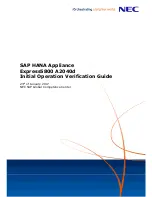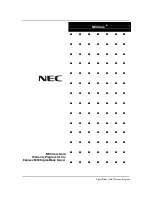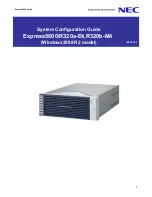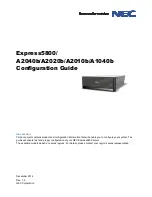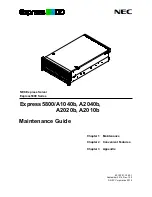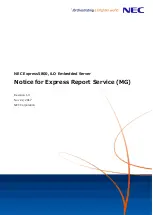
NOTE:
It is recommended that all channels must be populated (CS A, B, C, D, E, F, G, H) for NPS1, but NPS1 does
support a 4 channel configuration of (CS C, D, G, H) but does not have optimal performance.
•
Requires all populated channels in a socket to have equal size memory.
•
In a dual processor system:
•
There is no requirements for both sockets to have equal size memory.
•
If both sockets have memory the interleaving mode must be the same for both sockets.
•
The system allows for one of the sockets to have no memory.
•
Single processor system creates a single NUMA node for the system, the SRAT and SLIT table are not required.
Socket interleaving (dual processor only) - NPS0
•
This interleaves all 16 channels (eight per socket) in a dual processor system.
•
Requires all channels in the system to be populated with equal size memory.
•
Creates a single NUMA node for the system, the SRAT and SLIT table are not required.
CCX/Last-Level Cache (LLC) as NUMA domains
In addition to selecting the number of NUMA domains via NPS option, the processor allows for making memory per CCX as NUMA
domain. In the processor each CCD has a maximum of two CCXs with each CCX having a shared last-level cache (LLC, or L3 cache) for
all cores. The CCX as NUMA domain option allows for each LLC to be configured as a NUMA domain so that for certain workloads pinning
execution to a single NUMA domain can be done.
The total amount of memory for each default NUMA node is divided by the number of CCXs within each CCD and distributed equally to
each new per-CCX. The max number of NUMA domains generated will based on how many CCD and CCX are fused for that processor
SKU.
Removing a memory module
Prerequisites
1. Follow the safety guidelines listed in the
2. Follow the procedure listed in the
Before working inside your system
.
3. If installed,
.
WARNING:
The memory modules are hot to touch for some time after the system has been powered off. Allow the
memory modules to cool before handling them. Handle the memory modules by the card edges and avoid touching the
components or metallic contacts on the memory module.
Steps
1. Locate the appropriate memory module socket.
2. To release the memory module from the socket, simultaneously press the ejectors on both ends of the memory module socket.
CAUTION:
Handle each memory module only by the card edges, ensuring not to touch the middle of the memory
module or metallic contacts.
3. Lift the memory module away from the system.
Installing and removing system components
73































